Tuesday 14th to Monday 27th August 2018
Erromango
The next island up the chain of islands of Vanuatu was Erromango and having left Port Resolution at dawn for the 55 mile sail, we anchored before dusk in Dillon’s Bay. It is not an ideal anchorage, getting a strong swell from the sea which caused the boats to roll from side to side. Some boats had rigged up ingenious ways to reduce the rolling, suspending buckets out on either side of their boats to try to dampen the roll. We on Vega just put up with lying in bed being violently rocked to and fro. The other difficulty was getting ashore in the dinghy. Large rollers were breaking on the steeply sloping beach and there was a shallow bar at the entrance to the small river which could only be crossed at high tide. The first day we motored along the beach trying to find a safe spot to land but with big waves breaking we gave up and had a day on Vega. The following day we attempted to enter the river where we had seen several local boats cross the bar but we hit the pebbly bottom, scraping the outboard propellor and as we turned around a large wave broke over the dinghy drenching us. Back to Vega for a coffee, change of clothes and rethink. On our next attempt we finally managed to get ashore on the beach with the help of one of the locals.
The village was strung out along the river with a secondary school, a small shop and, of course, a church. Lots of people said hello and stopped to chat. We have found the people of Vanuatu to be very open, friendly and laid back and they have been judged to be the happiest people in the world by Lonely Planet.
A group of women were sitting in the shade grating manioc, a starchy root from which they make laplap, which is a chewy pancake and the national dish of Vanuatu.
As we walked through the village and along the river a fourteen year old boy, Abel, attached himself to us, swinging his machete at the undergrowth. Although this felt a bit threatening at times the machete is a vital accessory for every young man around here, even tiny tots wander around carrying sharp knives.
Abel wanted us to give him a lift on Vega to the capital Port Vila on the next island where his parents supposedly were, an overnight trip. I didn’t quite believe his story and wasn’t going to take a child without his parents’ permission, so we refused (we later found out that he was living with his grandparents here whilst his parents were away in New Zealand, fruit picking, and he fancied a trip to the capital during the school holidays to hang out with his mates). We were also asked by Nelson, one of the locals, for a lift which we were about to agree to until we heard that he also had 170kg of sandalwood to bring along to sell in Vila. We couldn’t imagine how this would fit onto Vega’s decks. A few days later Nelson persuaded an American catamaran to carry him and his load.
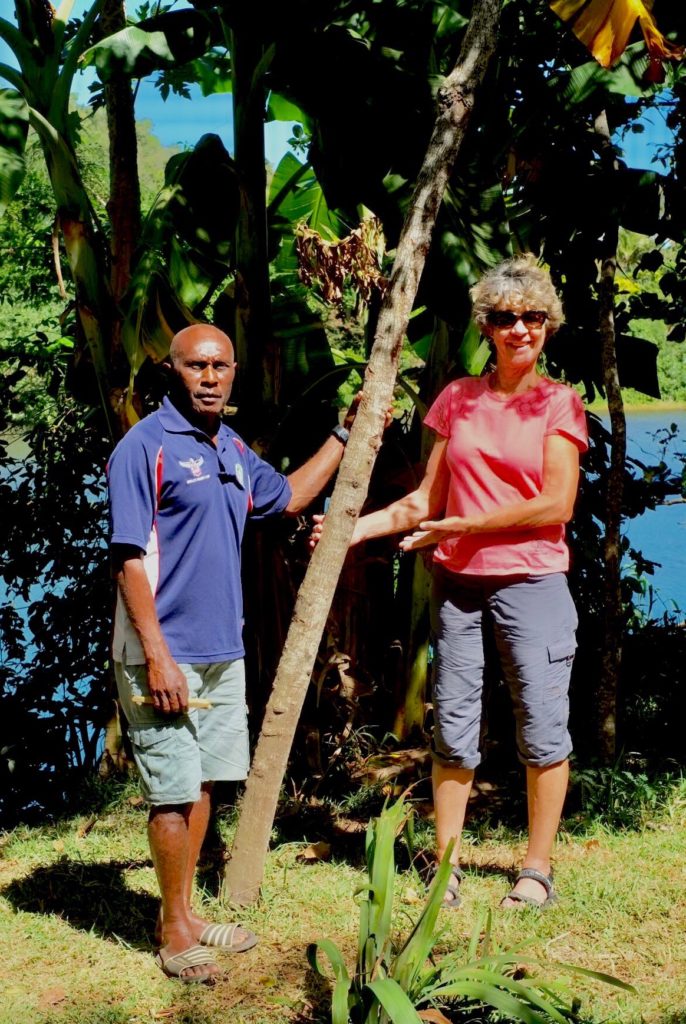
In the early 19th century Erromango was covered in sandalwood forests. The wood was highly sought after, particularly in China, for its aromatic oil and as a carving wood and traders flocked to the island, some trying to seize the island forcibly, at the same time bringing disease. Within 40 years the sandalwood resource was almost completely exhausted.
Dillon’s Bay has a certain notoriety for being where John Williams, a missionary and explorer, was killed and eaten by cannibals in 1839. Williams had spent many years travelling around the South Pacific with his wife and children, spreading the Word to the heathens, but met his end in the New Hebrides for inadvertently straying into a sacred and taboo area here.
After being killed he was taken to a flat stone by the river where he was measured and his outline chipped in the rocks, before his body was divided up and distributed among several villages. In 2009 his descendants traveled to Erromango to accept the apologies of descendants of the cannibals in a ceremony of reconciliation.
Nelson’s brother Jule guided us along a narrow, overgrown path by the river to find the right spot, marked by a small plaque, although we couldn’t make out the outline of Williams’ body on the rock there.
Jule
It was a beautiful walk along the river……
You can’t blame the people of the islands for resenting the arrival of Europeans, including the missionaries; they exploited the island’s sandalwood and brought disease which decimated the population (and which some missionaries attributed to the native’s godlessness) as well as ‘blackbirding’ by which people were taken, often forcibly, to work as indentured labour in the sugarcane and cotton plantations in Queensland, Australia and the mines of New Caledonia. It was, in fact, the missionaries that stepped in to stop blackbirding. In the early 19th century the population of Erromango was estimated to be somewhere between 5,000 and 20,000 people and by the early 20th century it was just 381. Today it is a little over 2,000.
We also met Donald, a deeply religious man, who welcomed us to the village and gave us bunches of bananas from his garden. Donald usually acted as guide to the other local attraction that we had hoped to visit, the nearby Cave of Skulls where a former chief and his wives were buried, but he was that day involved with a mourning family whose 6 year old son had tragically died after falling into a fire. Villagers had brought them gifts of food and woven mats to show respect and sorrow for their loss.
We left Erromango later in the afternoon to continue north to the island of Efate, 80 miles away – just too far to manage in a day sail. It was a pitch black, moonless night and a rolly sail (we were relieved that we didn’t have an extra 170kg of sandalwood rolling around on the decks) as the wind gradually increased in strength to over 20 knots.
Port Vila, Efate
Port Vila is the capital of Vanuatu and looked surprisingly modern after Tanna and Erromango.
We arrived mid morning and anchored in the quarantine area waiting for Customs and Immigration to come on board. As ever they were relaxed, cheerful and joking but we were glad to be able to get to the small marina and a berth right in front of the restaurant and bar – perfectly situated for happy hour that evening with Australian friends on Aquabar and Whiskers who we’d first met in Tanna.
Getting around Port Vila was easy. Either everything was within walking distance or you could hail a minibus/taxi by the roadside which would take you any distance for just 150 vatu (about £1). We had to go to the port one day to collect our cruising permit and to the large supermarket and a hardware store just outside town. The fruit and vegetable market on the waterfront was colourful and more fun to shop at….
We also did the walking tour around Vila as suggested in our Lonely Planet Guide. We stopped by the war memorial, commemorating the dead from Vila in two world wars, but were unable to find any charming colonial buildings as mentioned in the guidebook, the centre of Vila being mostly new developments or rundown parades of shops.
It was the ‘gloriously pink Court House with fabulous timber doors and a sweeping staircase’ that I was keen to see so we trudged up a steep hill in the rain but it just didn’t seem to be where the map indicated it should. Wandering through a side gate and around the grounds of a house, which was unoccupied and closed up, we realised on our way out that we’d been trespassing in the Prime Minister’s Official Residence.
We finally gave up on the pink Court House. It was only when I googled it later that we found out it had burned down in 2007 (our Lonely Planet guide was published in 2009 so I hope someone’s let them know by now). Judging by the lack of any other colonial buildings in Vila it was a real loss (the two arsonists got 6 years in prison each).
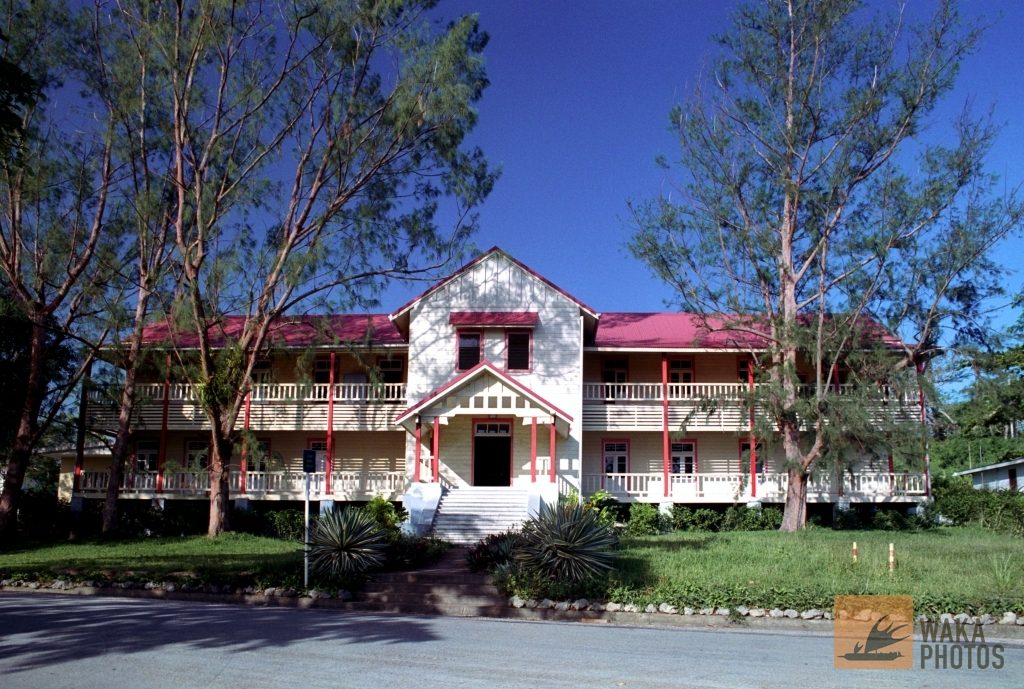
Much of our time in Port Vila was spent catching up on boat chores, laundry, shopping etc. Our heads had completely blocked whilst in Tanna and we had spent most of a whole day there taking all the pipework and valves apart. The metal valve system seemed to be the problem so it spent several days soaking in vinegar to dissolve calcium deposits. We finally put it all back together and Hugh decided to fill the holding tank with water to flush the system through. Unfortunately he confused the holding tank and diesel tank and ended up filling the diesel tank with water. Being right by the restaurant/bar we had an audience for all of this with plenty of helpful advice being offered. Poor Hugh spent two days emptying the diesel tank, not the easiest of things since it meant emptying the large side locker (yes, that one full of all our lines, boat parts, spare anchors and outboard etc etc) then hand pumping 200 litres of water/diesel mix into containers, all in the hot sun.
We had hoped to get to the Back To My Roots Festival, a three day festival of kustom dance on Ambrym island, 120 miles north. By the time that we had sorted the diesel tank and were able to refill it, we just had time to make it for the last day, which meant a hard 24 hour sail/motor.
Ambrym
By the time we reached Nopul Bay in the north of Ambrym island it was almost dark. We dropped anchor amongst the dozen or so yachts already there. Several boats we already knew, including Nahoa and Florence, who were able to tell us arrangements for the next day. We met on the black sand beach the following morning and a couple of trucks took us cruisers along the rough, unmade track to the next village where the festival was taking place.
The Back To My Roots Festival is put on mainly for the locals themselves rather than tourists. It is too difficult for most tourists to reach here, the village being far from the only airport on Ambrym with rough, unmade roads, so yachties were, almost exclusively, the only visitors at the festival. We were met by a young man wearing nothing but a belt and a namba (a penis sheath) with a few leaves stuck into his belt behind, who took our fee of 3000 vatu each (about £20) and issued us with an official receipt. We had missed the activities that had taken place on the first two days, which had included flute playing and sand drawing, but on this, the last day, the highlight of the festival was the Rom dance which would not take place in the rain… and it was threatening rain!
We waited around in the clearing where the dancing was to take place, dominated by two large tamtams (wooden slit drums)….
The first dance was the Yam Dance which promotes a good yam harvest, yam being an important food crop in Vanuatu with both cultural and social significance. The men wore very little, the namba held the penis upright with scrotum exposed and with leaves stuck into their belts behind, like bird’s tails. Small boys carried the yams looking like giant, gnarled, hairy phallus. They ‘danced’ facing inwards, singing, chanting, stomping to the beat of tamtam drums. It felt very powerful and primeval.
A few women and young girls appeared, wearing only grass skirts, and shuffled at the edge of the group of men. They made me feel uncomfortable, perhaps because they were bare breasted in front of tourists for whom this was not the norm, perhaps because they looked so unhappy, perhaps because they were clearly peripheral to the main and very masculine display – it seemed symbolic of the low status of women in most of Vanuatu society where there are high levels recorded of domestic violence.
There was a delay as the weather was assessed…… would it rain or not?
They decided to go ahead with the Rom dance. The two large tamtam drums were beaten as from across the clearing the dancers emerged…
At the head of the group were men dressed in flowing cloaks of dried banana leaves with tall painted masks…. they swirled and stomped to the drum beat, singing and chanting, moving away from the clearing then returning.
It was a very exciting experience and we felt privileged to have seen this dance. In Vanuatu magic is important and black magic is especially feared. The magic on Ambrym is particularly strong and is the main defence against the angry spirits of ancestors. The headdresses in the Rom dance, which are all individual, are burnt following the dance to ensure that the spirit of the dance doesn’t stay to make trouble in the village.
A group of the cruisers had arranged to trek to the top of Mount Marum, one of two active volcanoes on Ambrym. This was accessible from the next bay down, Ramon Bay, to which we moved and re-anchored but it meant an early start and a long day. At 5.30am the volcano was covered in low cloud but we headed over to the beach anyway to meet John, the guide, who had organised two trucks to take our group of eleven to the start of the track. It was a rough ride past villages, across a stream, up steep muddy slopes where the driver had to engage the four wheel drive, through dense forest to where a tree had fallen blocking the road, presumably during the earthquake they had experienced on Ambrym two days before we arrived. We had to walk from here on.
It was a beautiful walk along a track up and down through gorgeous rainforest.
Tree fern carving:
….. then across a vast ash plain, lying within the old caldera of the volcano, dotted with purple orchids.
After just over three hour’s walking we stopped to rest and eat lunch at the camp within the volcano caldera.
It was still another hour’s walk to the crater of the volcano at which point John looked anxiously at the cloud cover for a while before deciding there was no point in continuing. Most of the group insisted that they had not come this far to give up, so we pushed on higher through steep slopes of grass.
As we continued the cloud got denser and more of the group dropped out with John becoming increasingly worried. As the lead walkers disappeared ahead of us along a narrow, barren ridge and into the thick mist, Hugh and I turned around as John persuaded us it was still another 45 minutes to go.
After 10 minutes the remaining and more dogged four of the group, plus the reluctant John, reached the edge of the crater which was completely filled with thick cloud obscuring the red hot lava below, although they could hear the volcano rumbling and had the satisfaction of having made it to the very top.
The walk down was much quicker, but with aching knees and blistered feet it was a relief to be met by the trucks (who had in the meantime got a chainsaw to clear the fallen tree).
When we went to bed that night there were 12 boats in the anchorage. By the time we woke at 6.30am, well after dawn, there were three remaining. Within the hour we too had left, heading west to Malekula island.

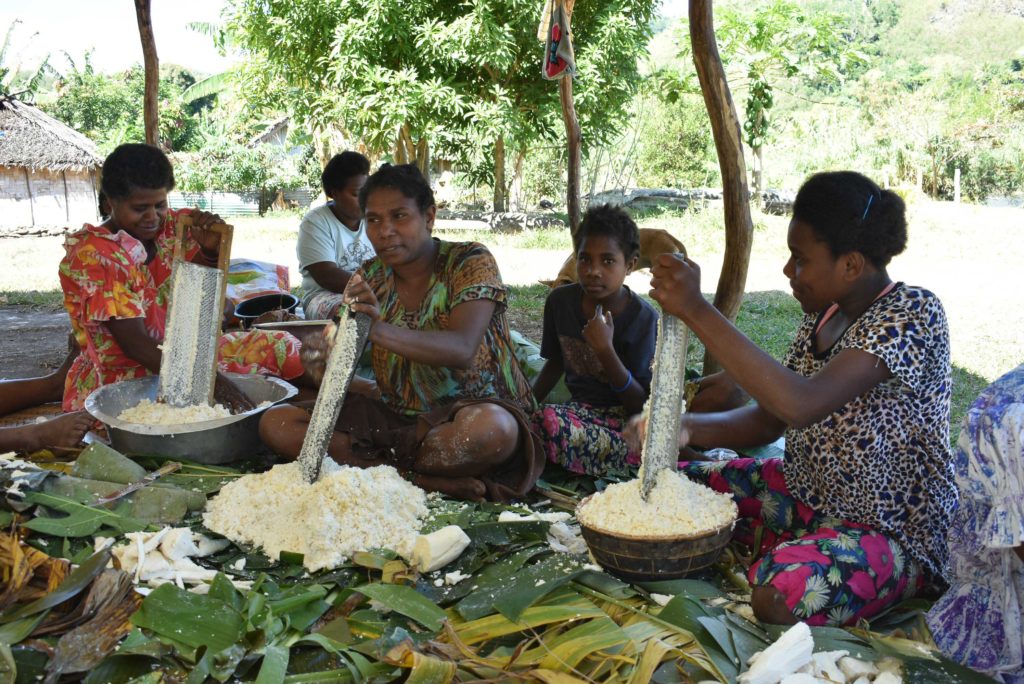
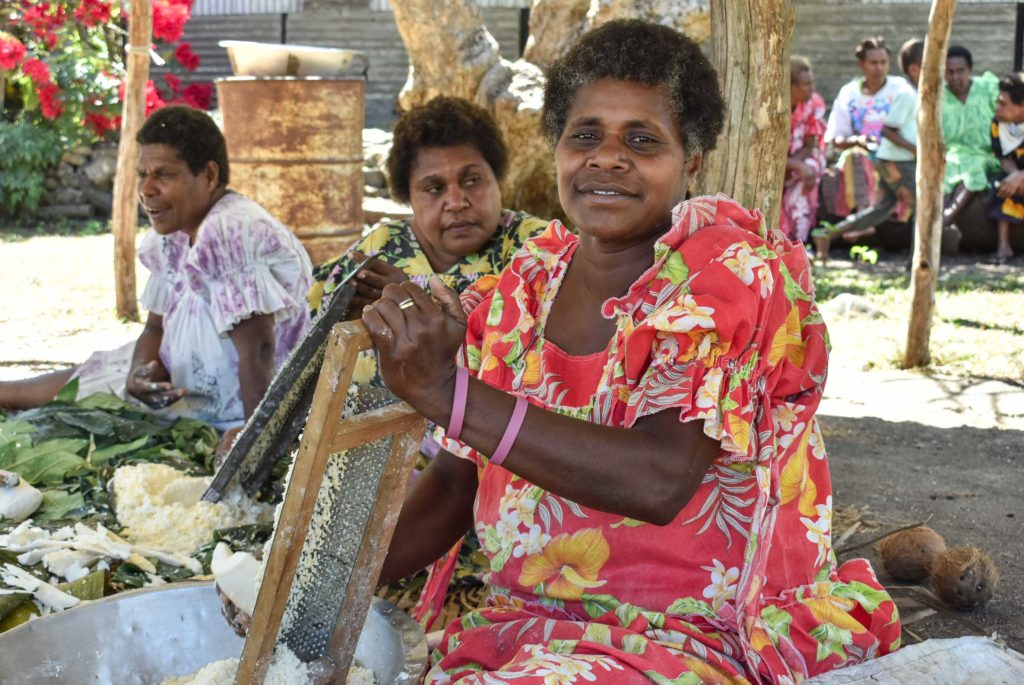
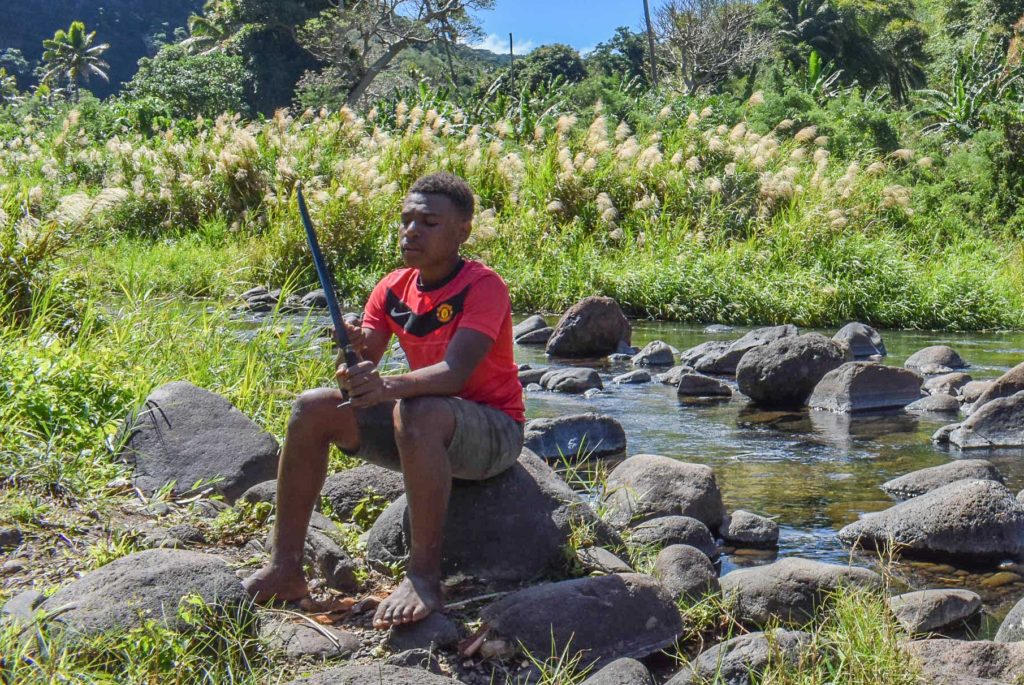
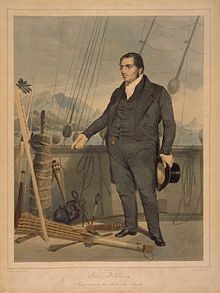
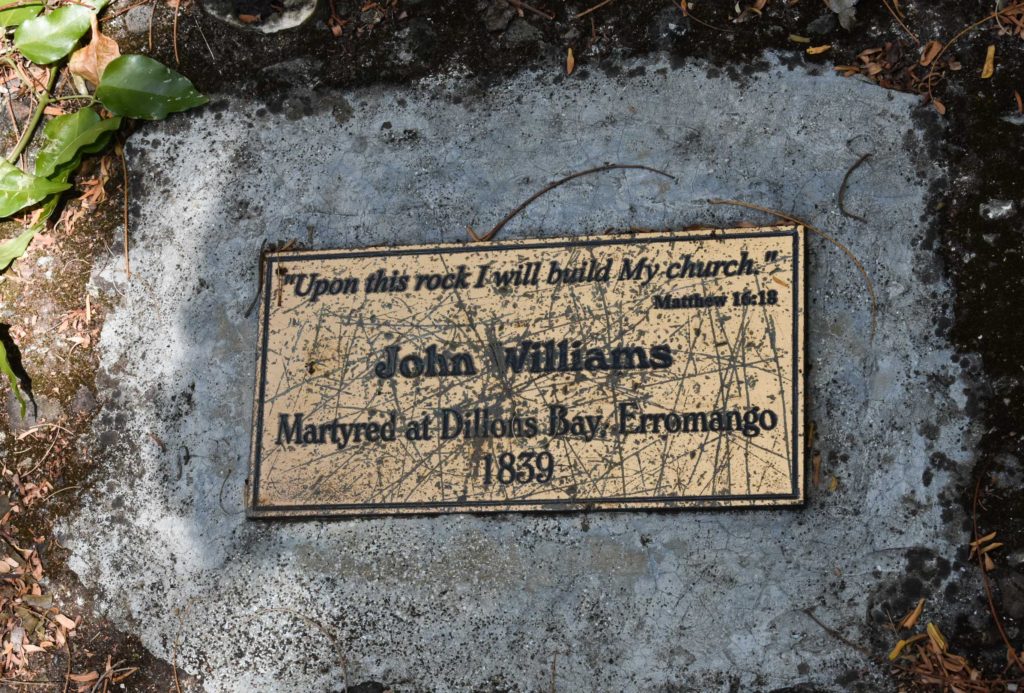
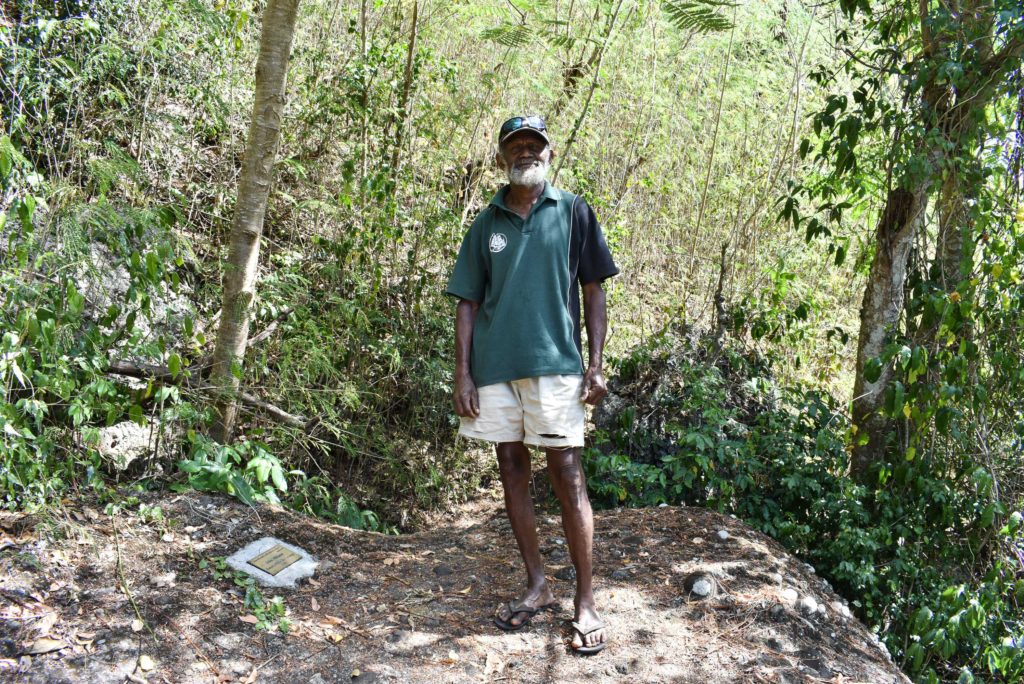
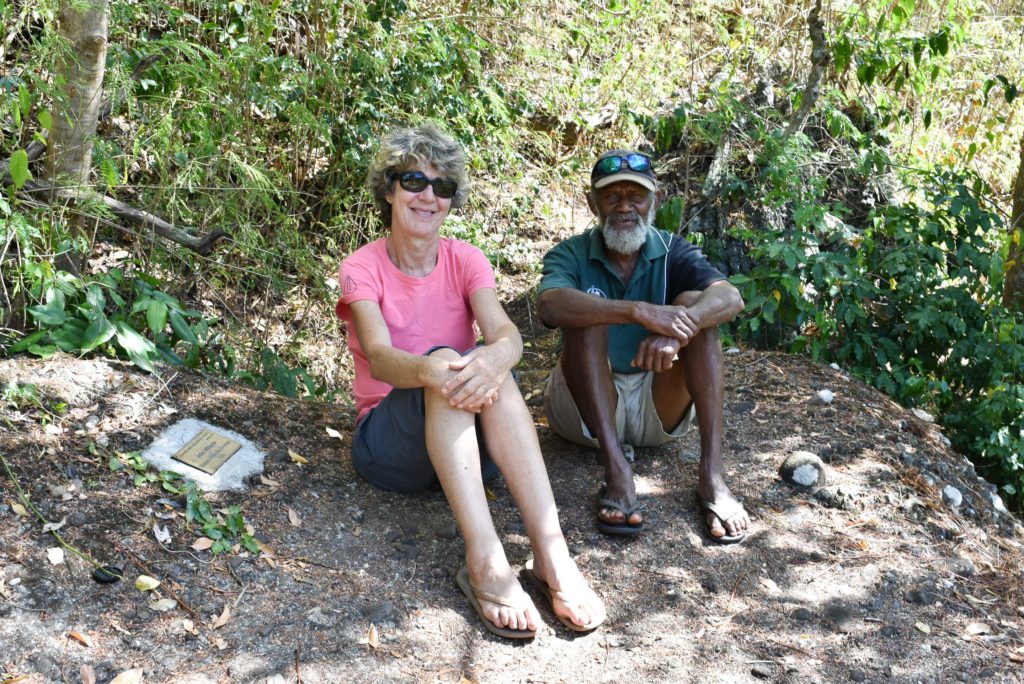
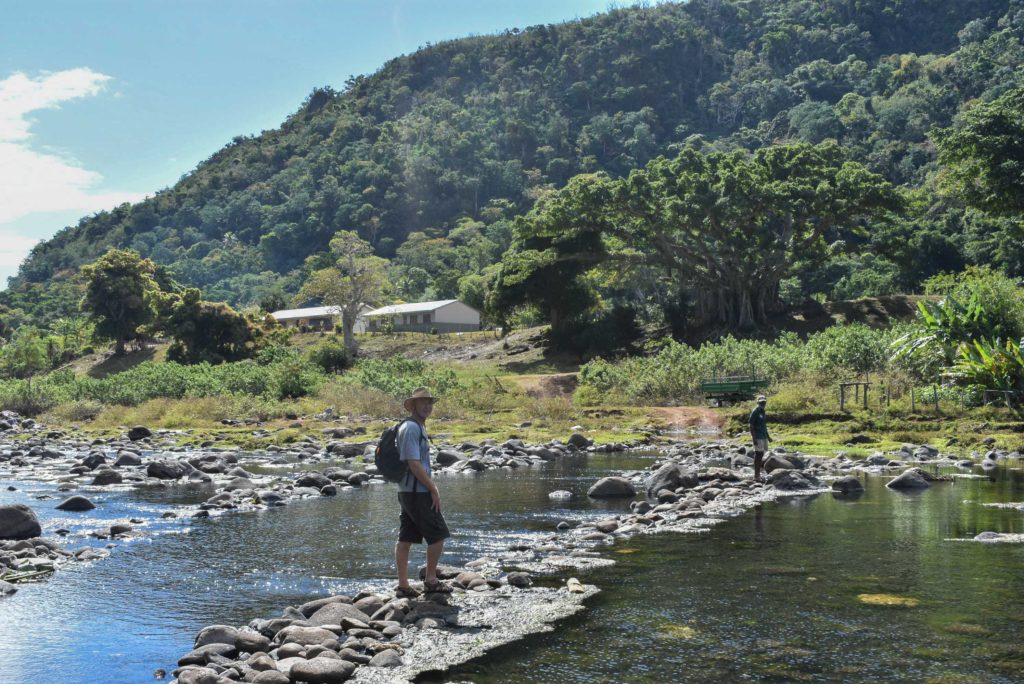
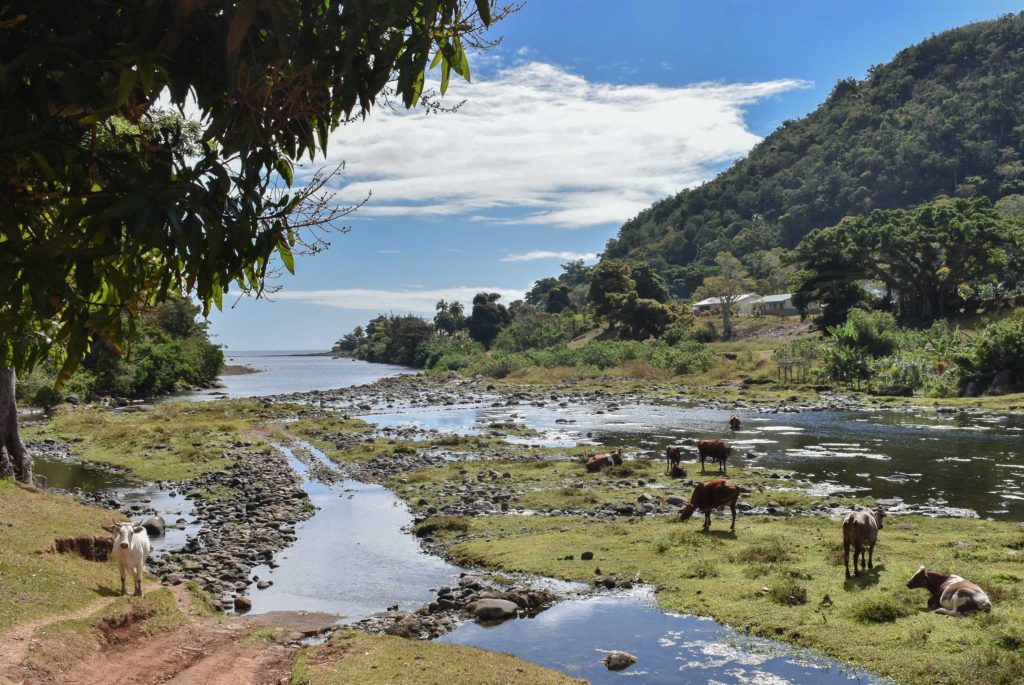
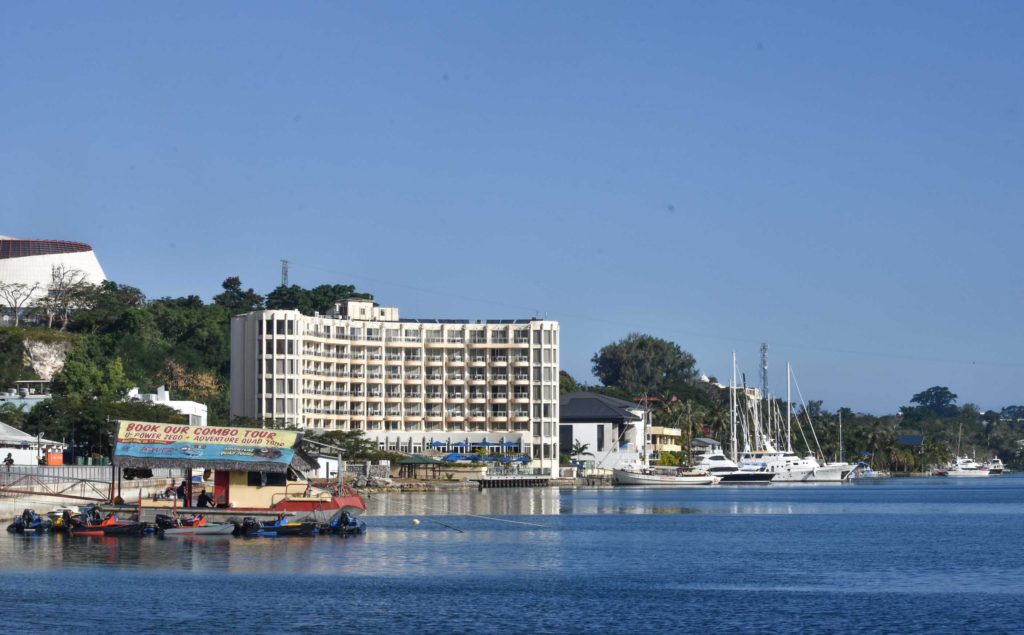
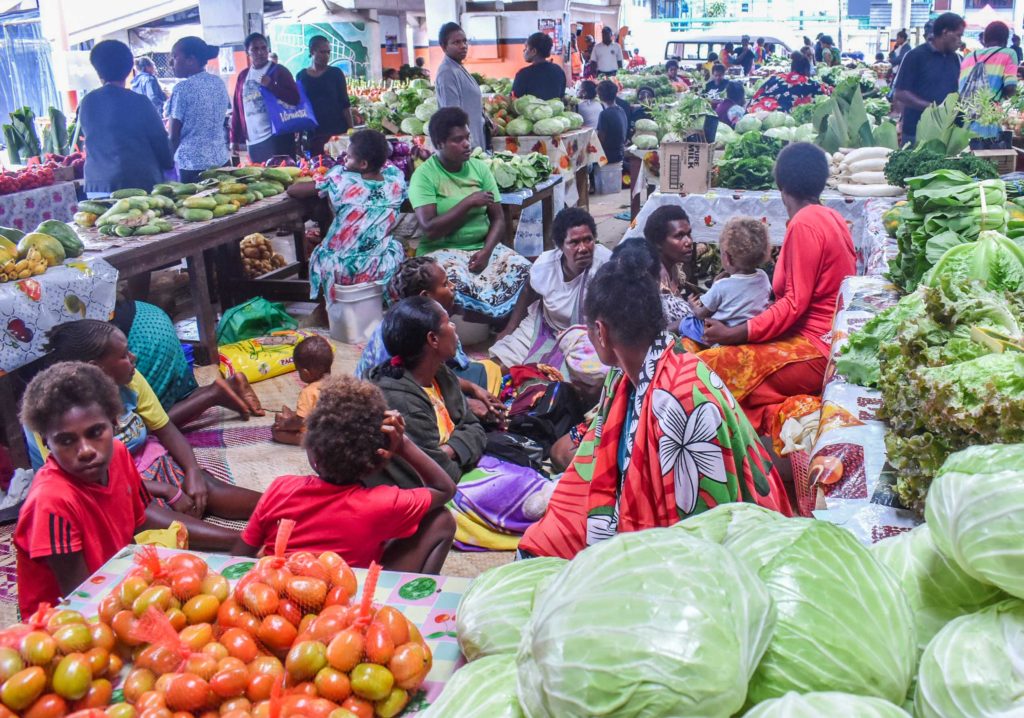
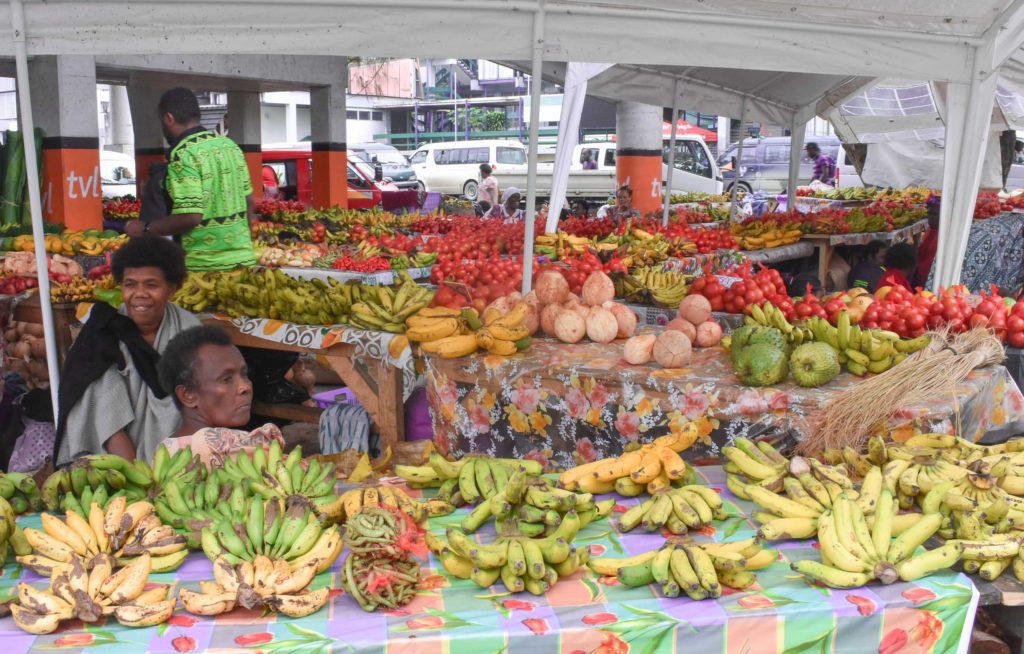
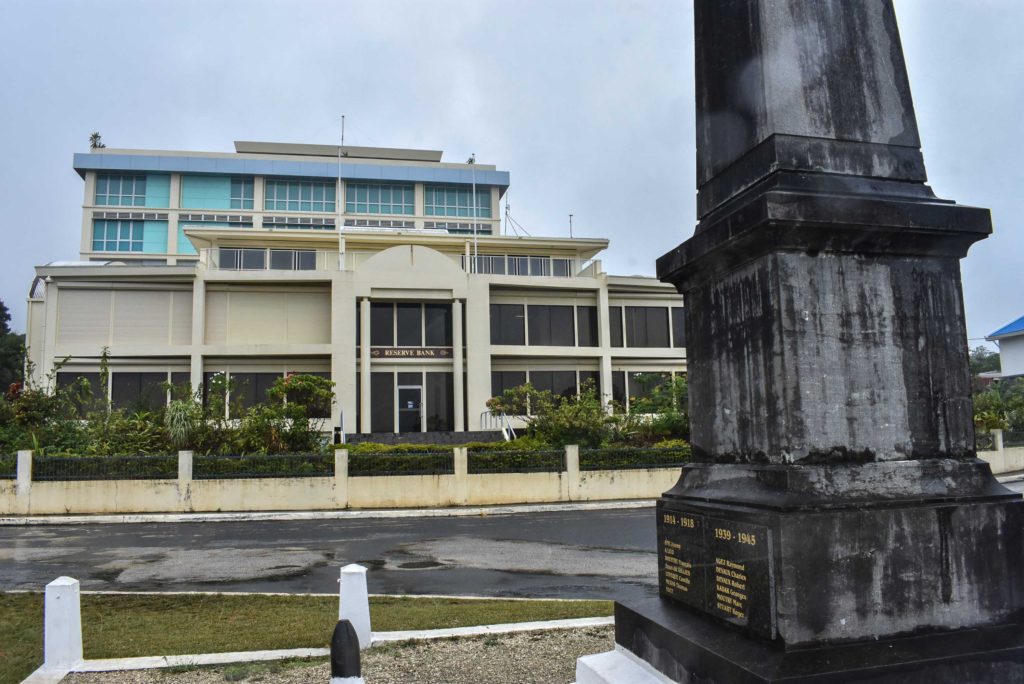
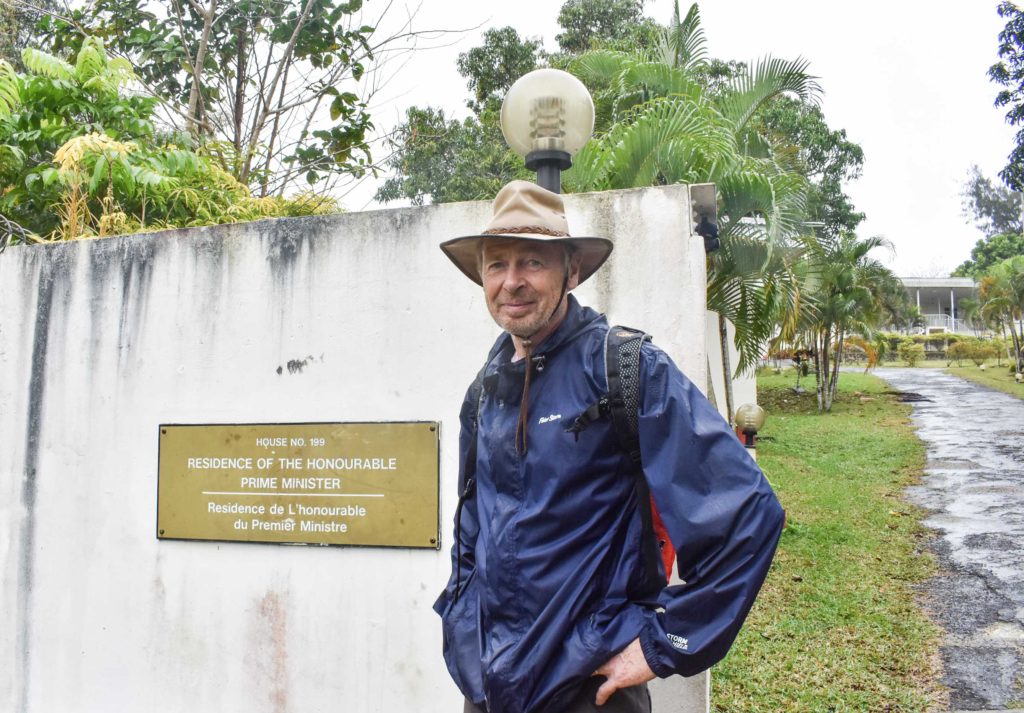
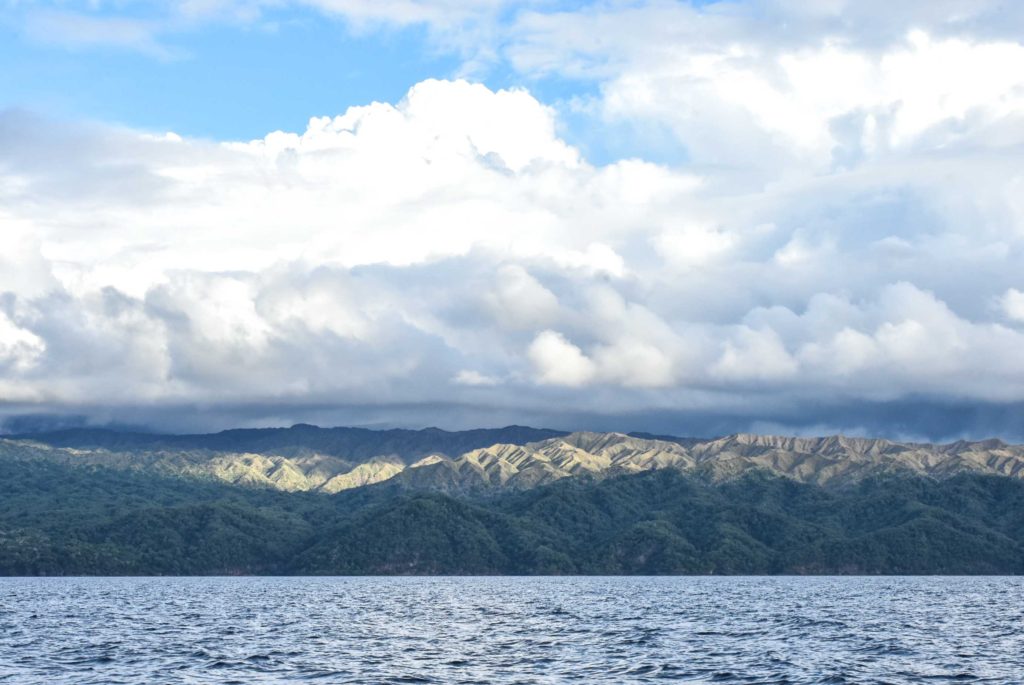
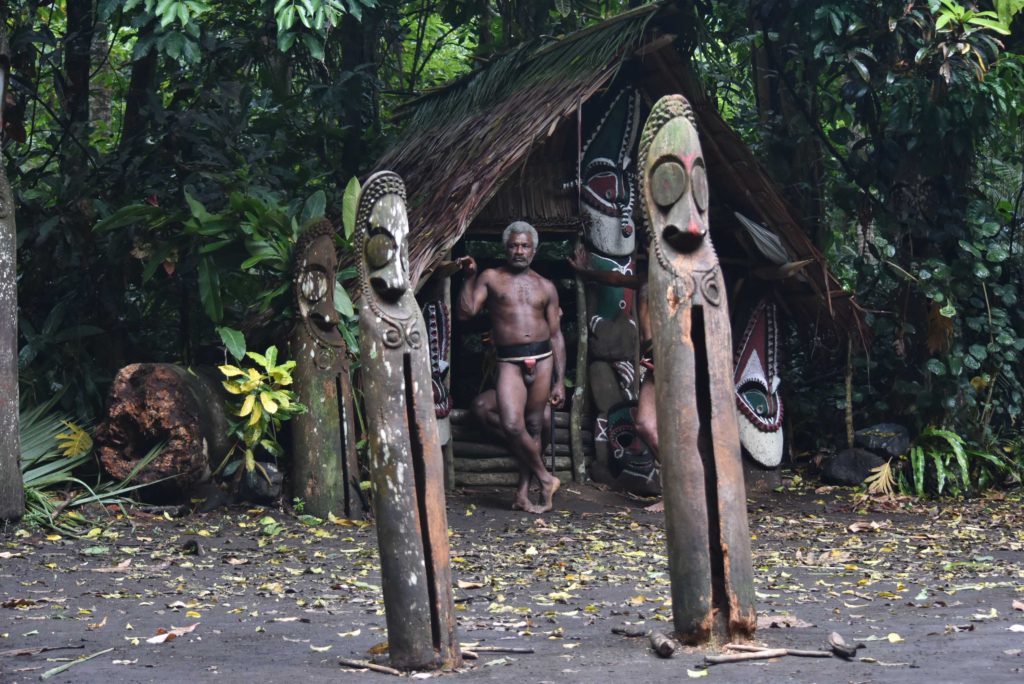
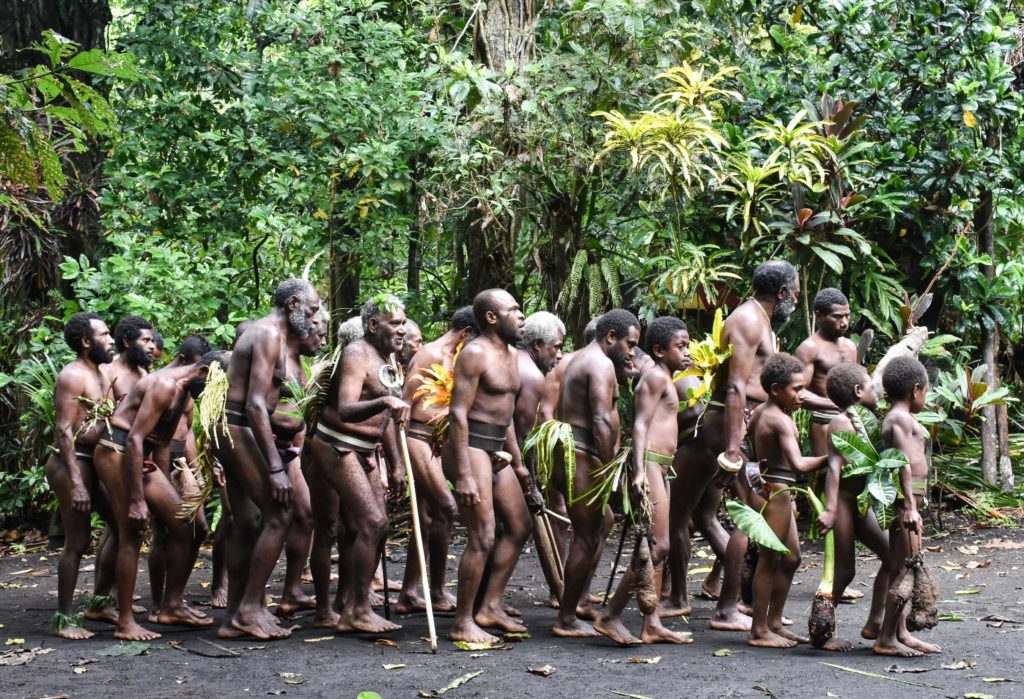
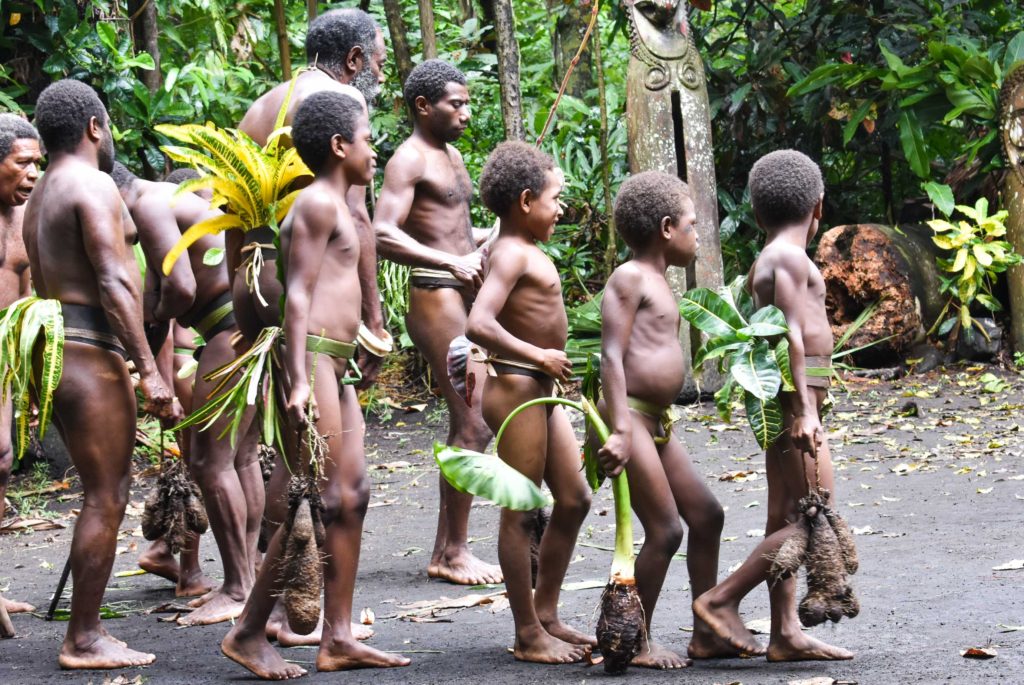
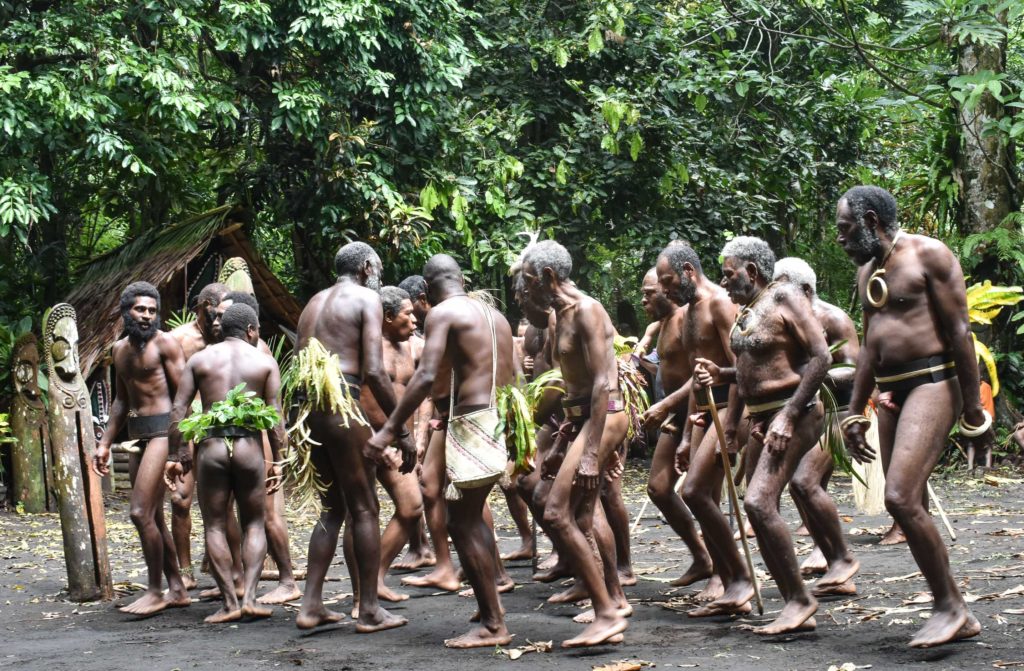
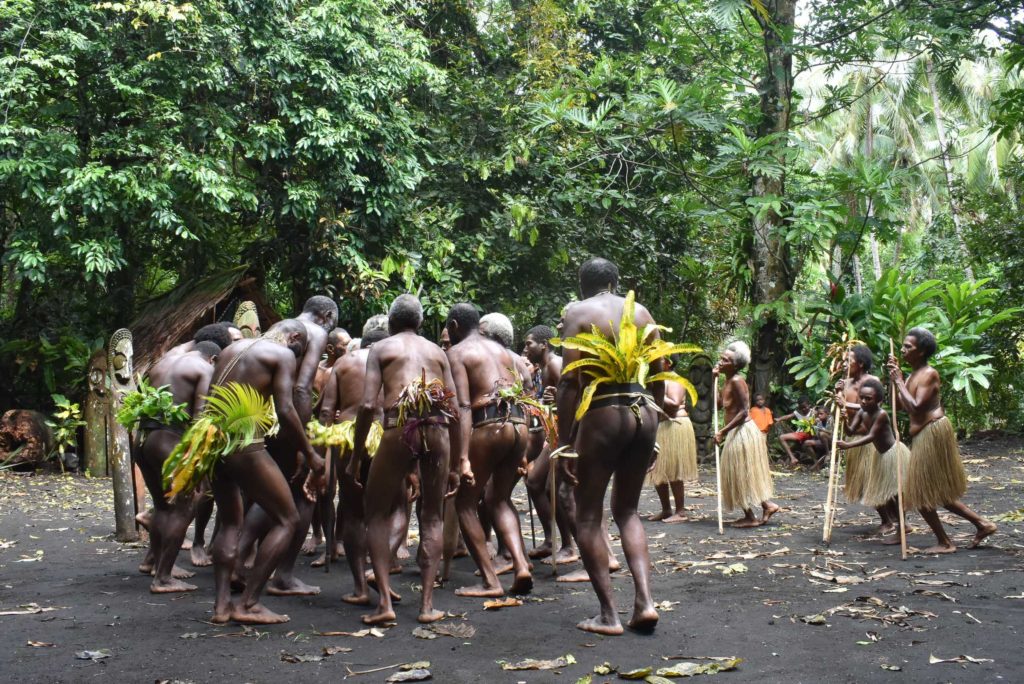
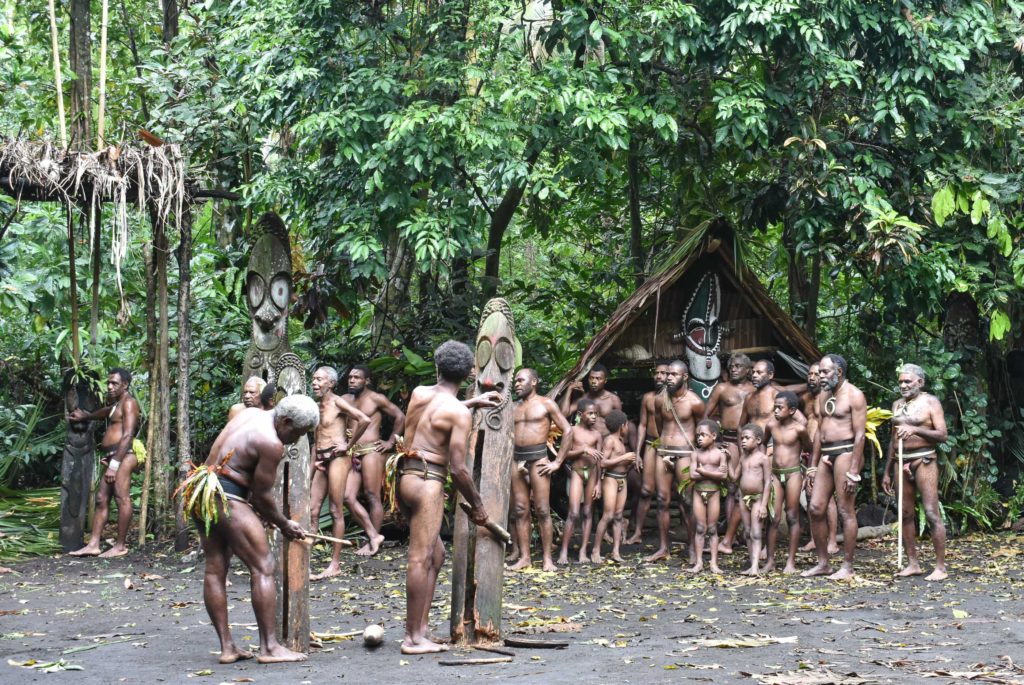
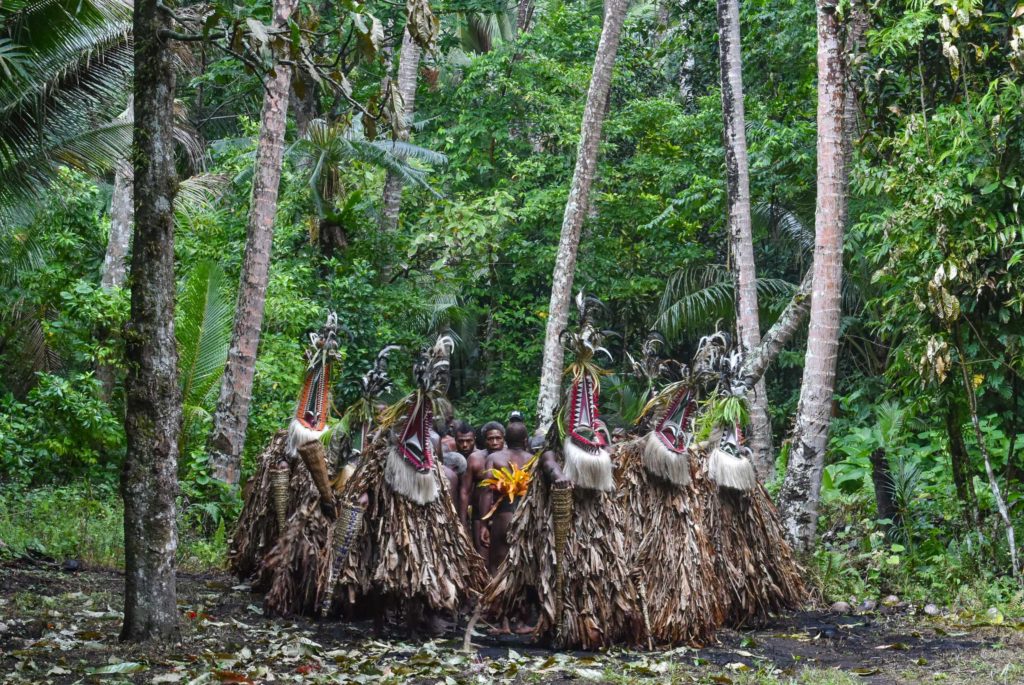
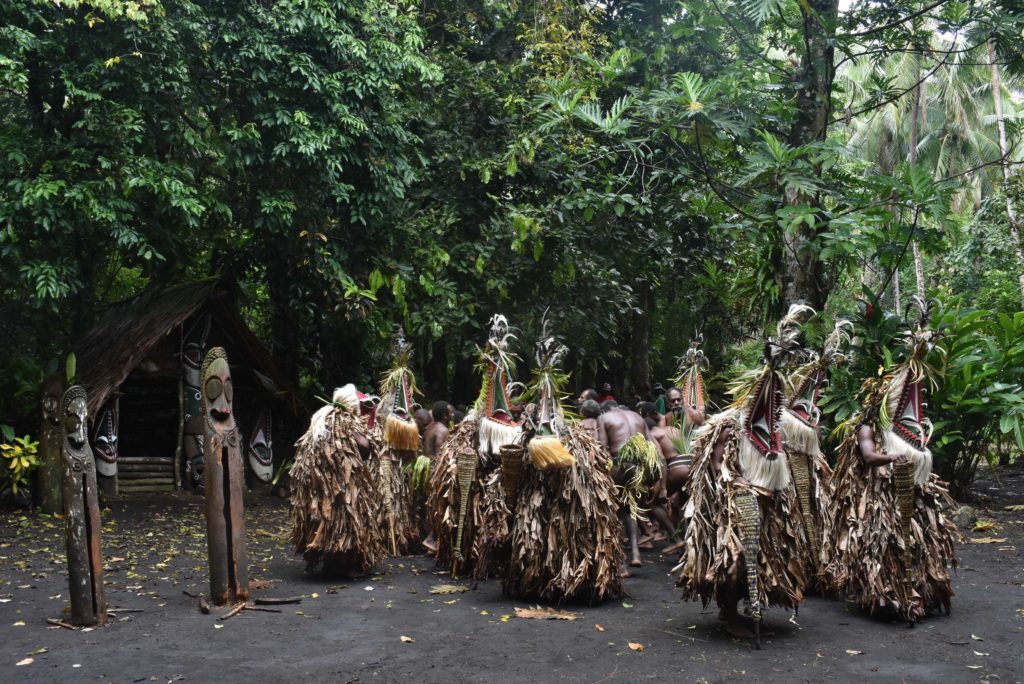
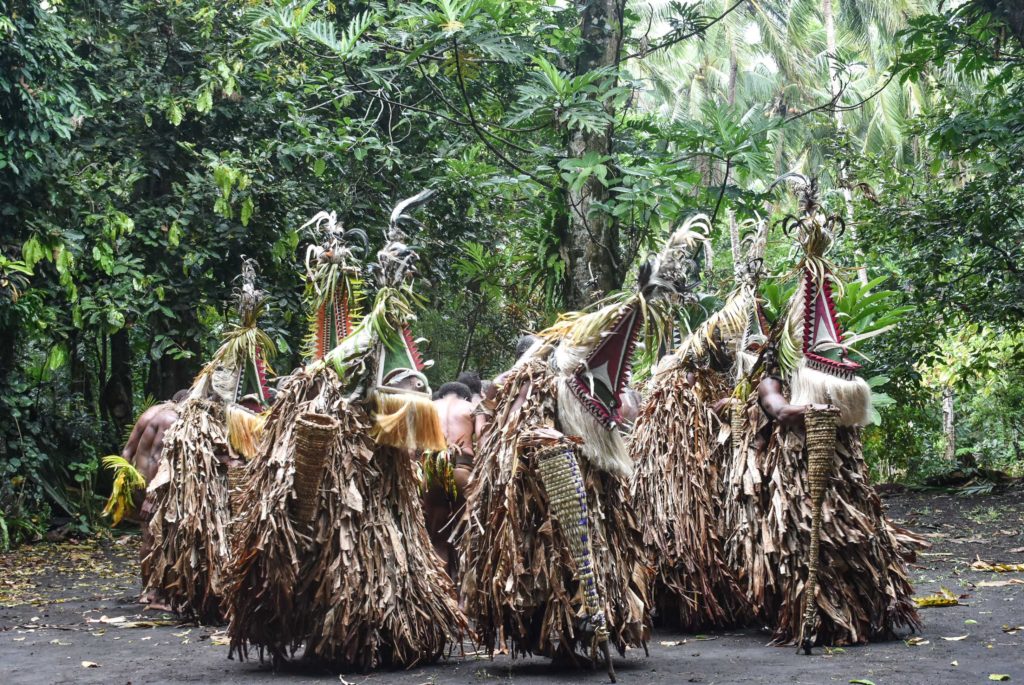
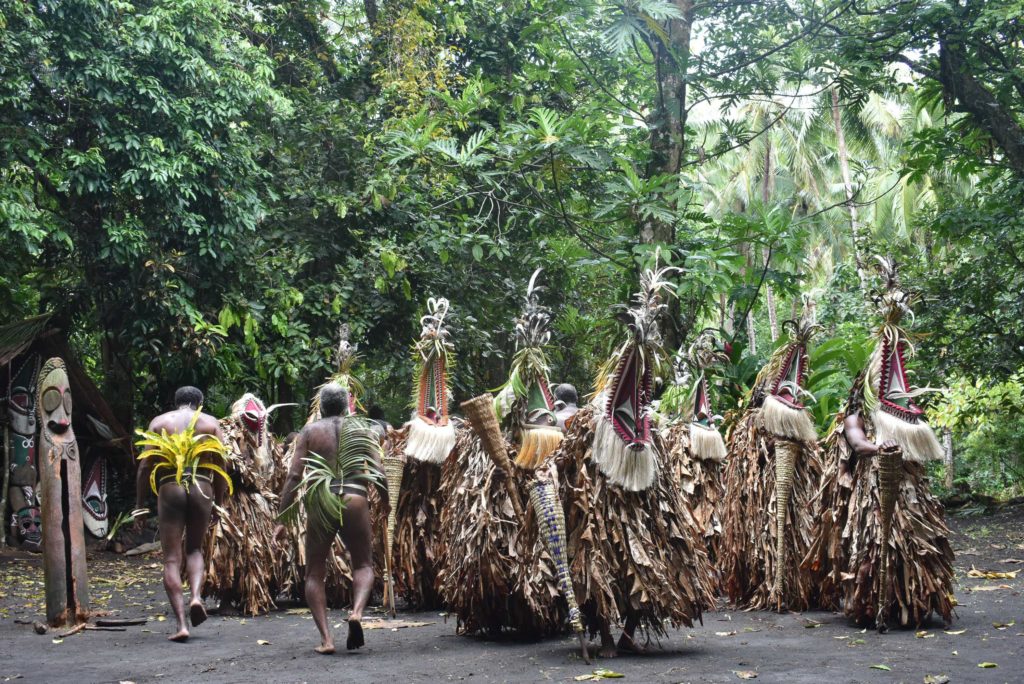
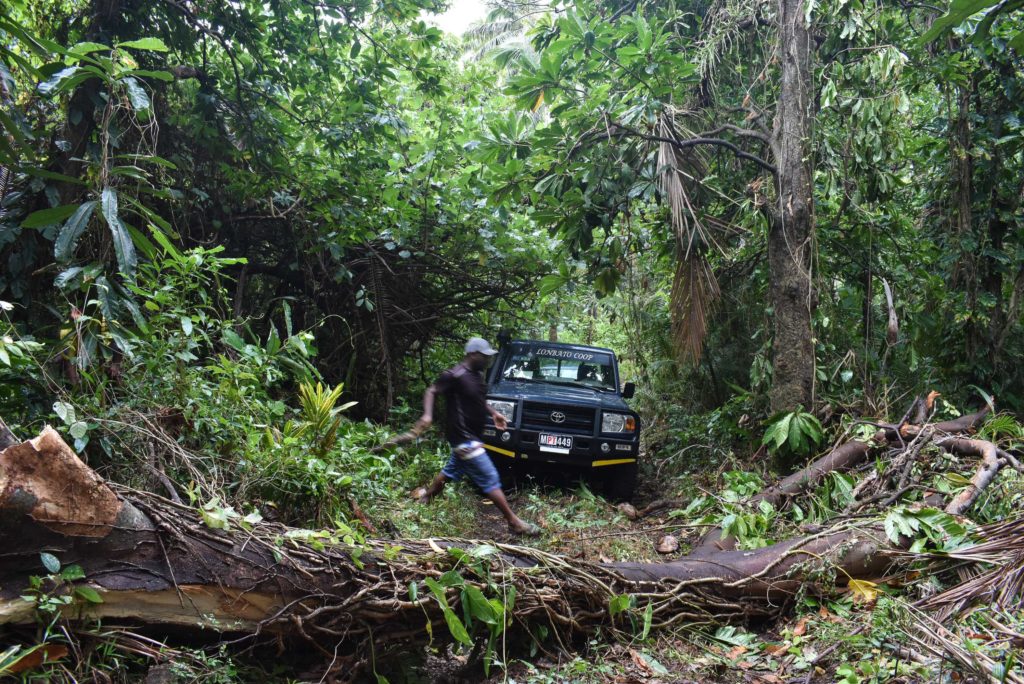
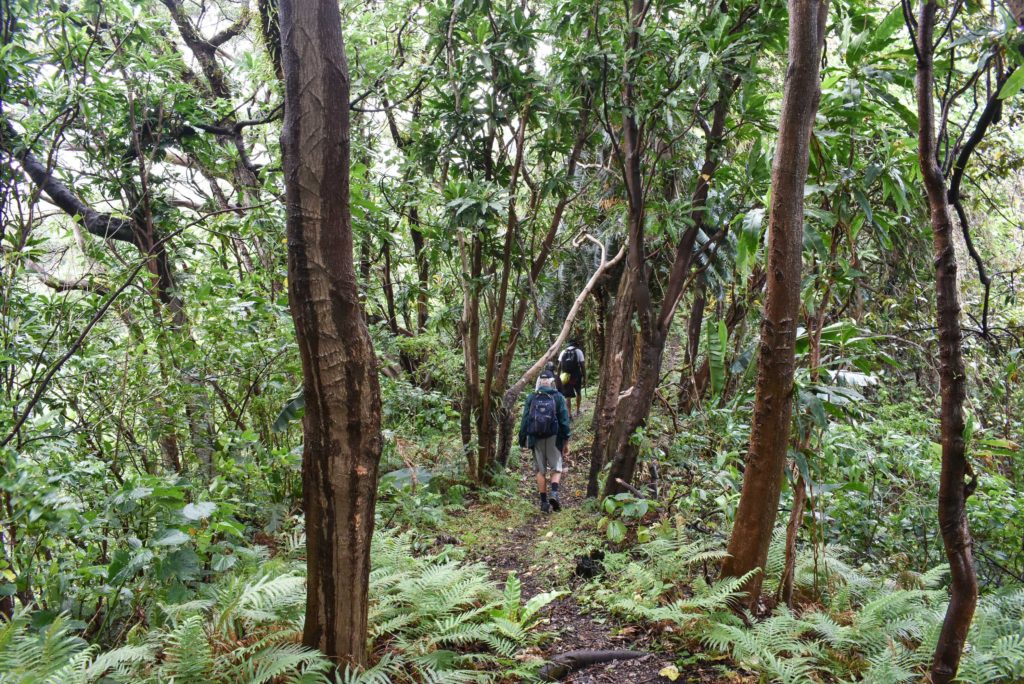
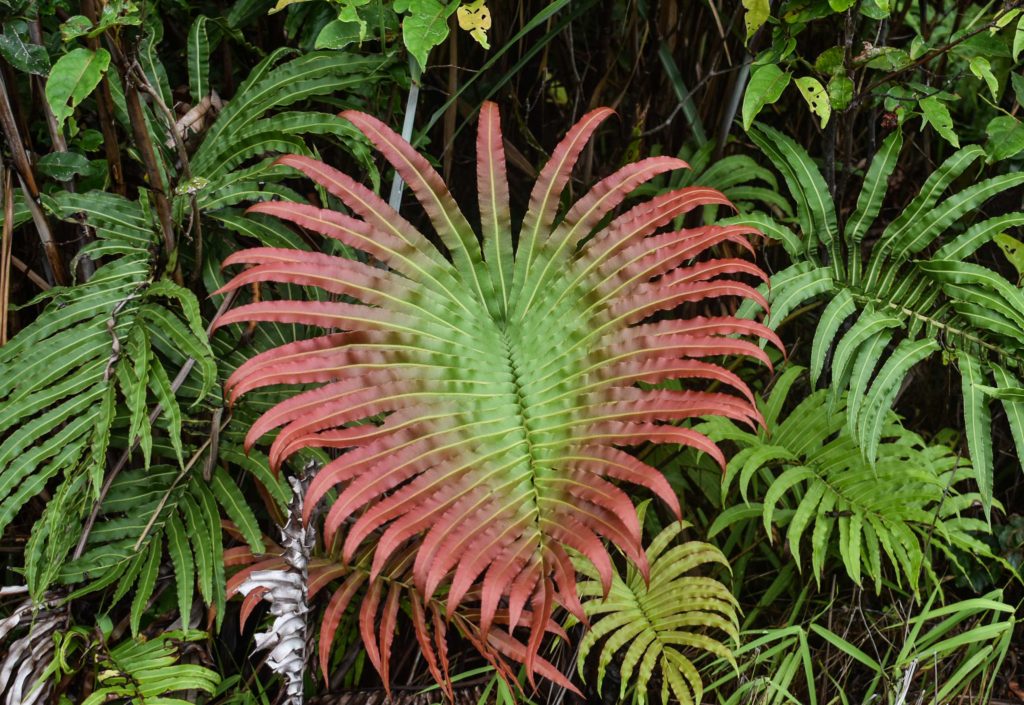
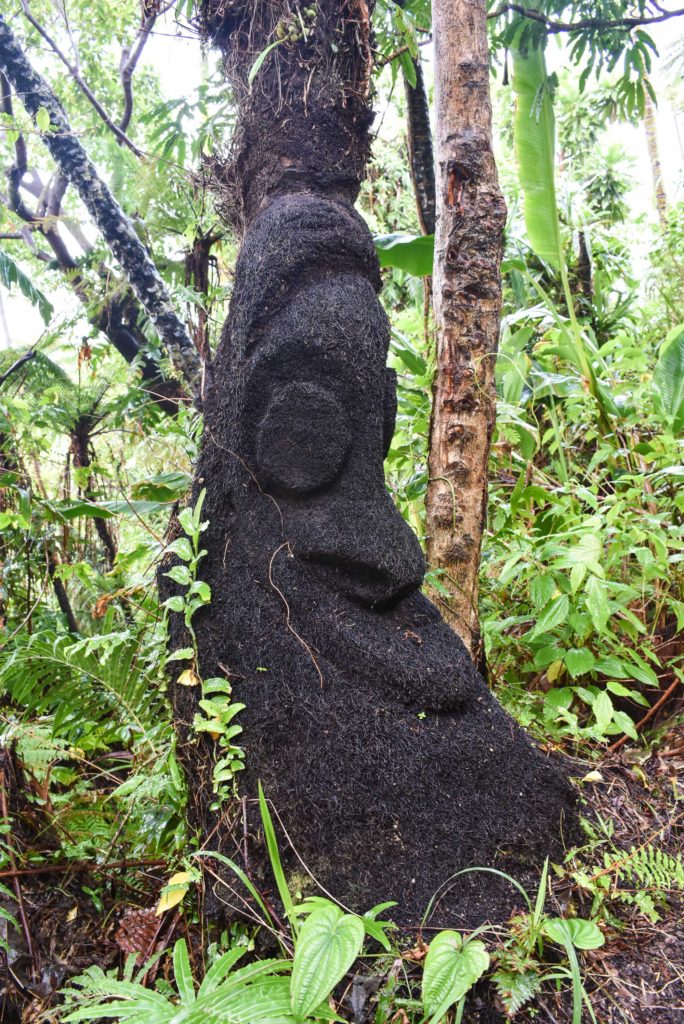

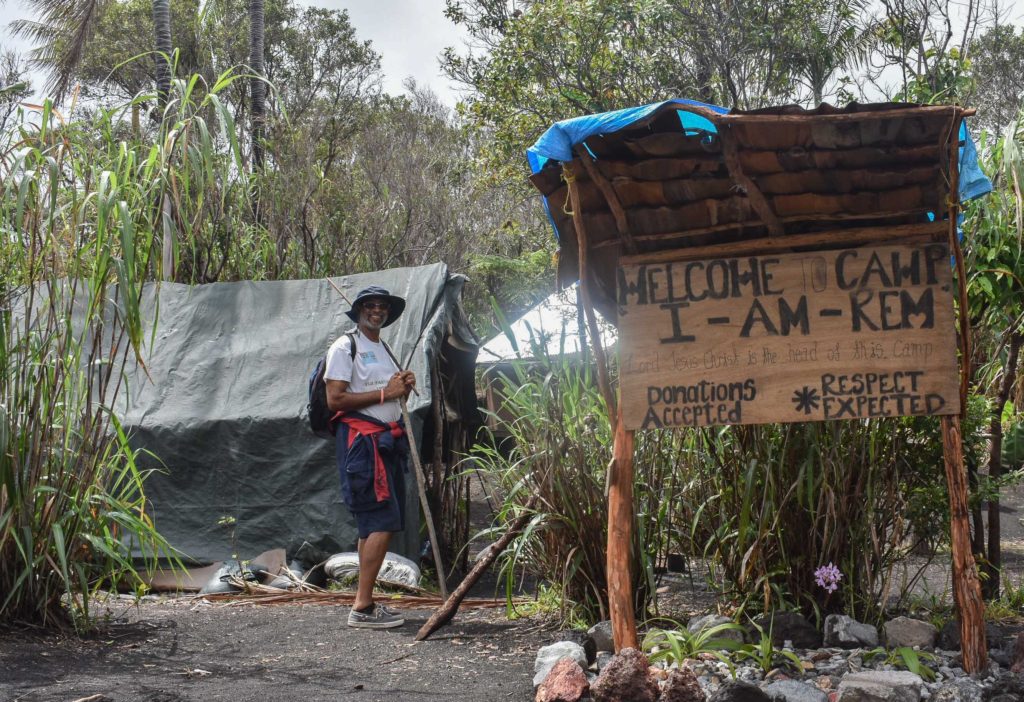
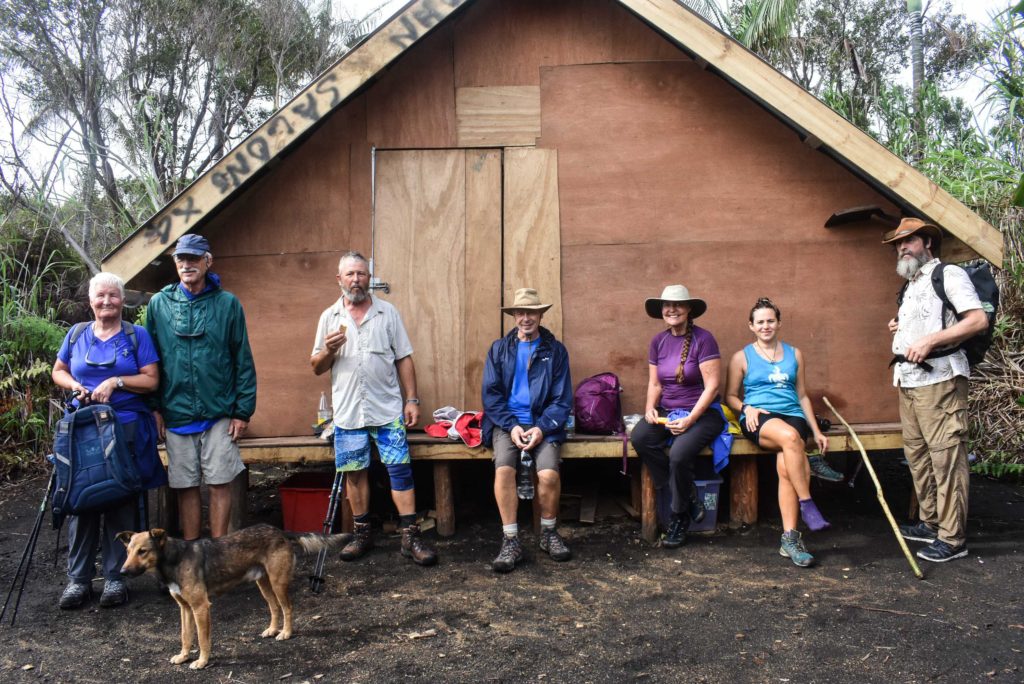
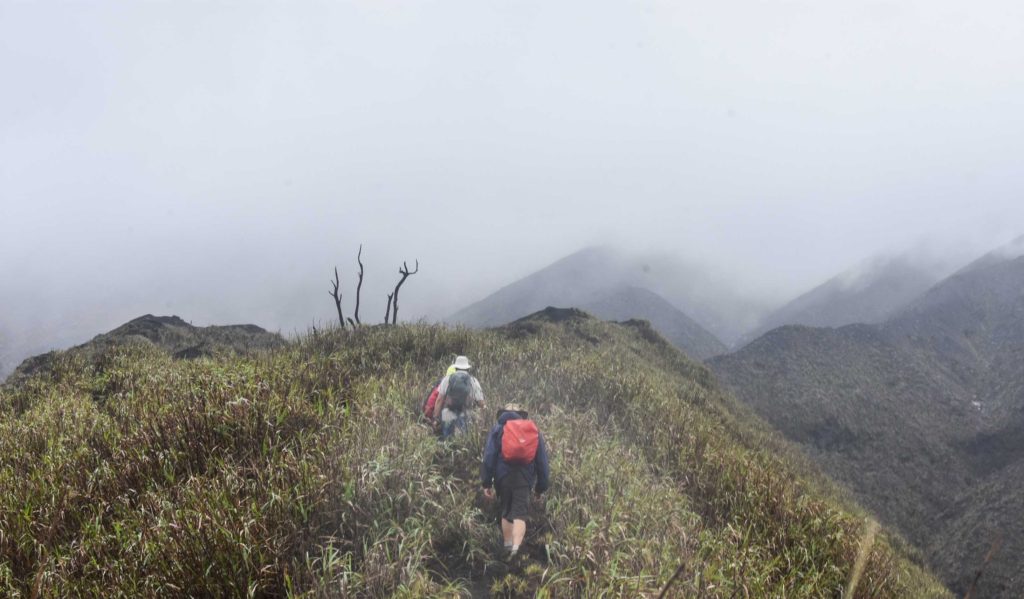
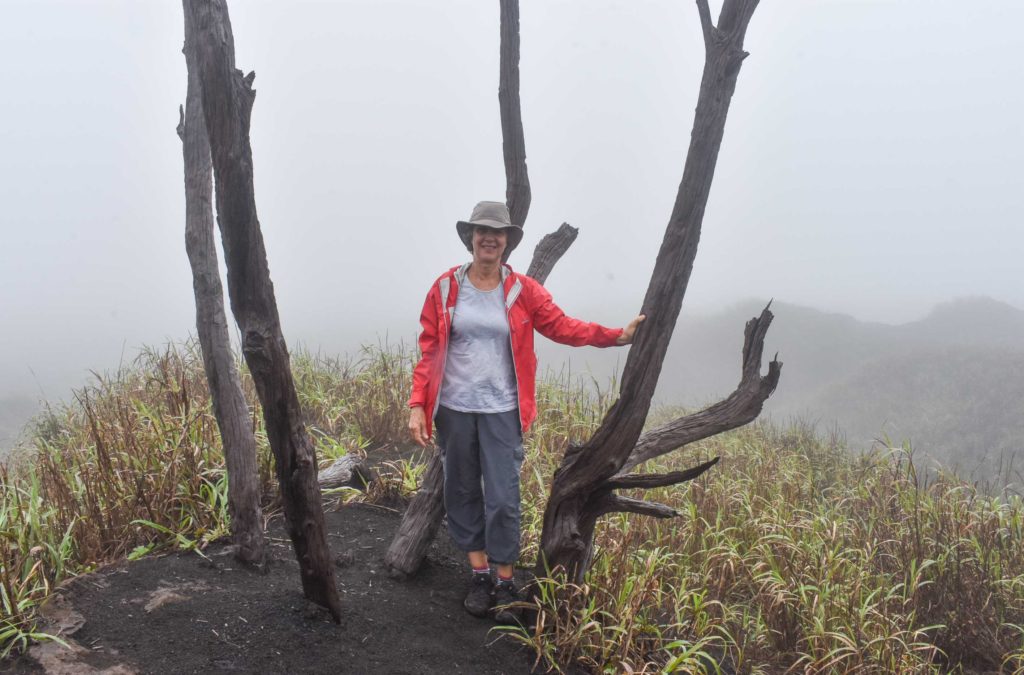
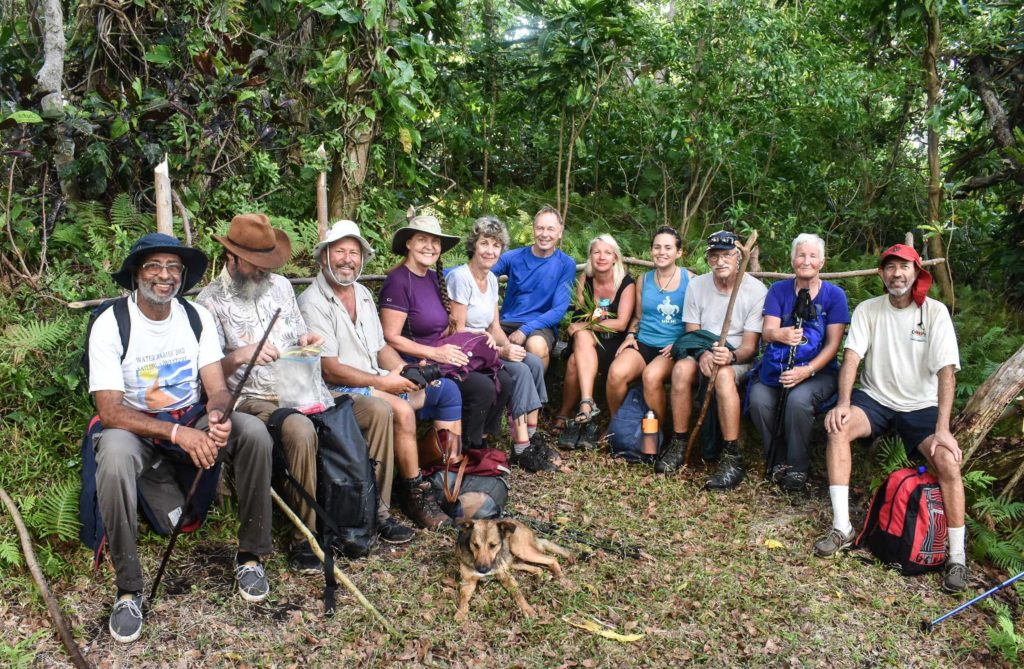
3 Comments
George Evans
October 16, 2018 - 9:32 pmThe Back to My Roots festival sounds extraordinary! What an experience.
annie
February 10, 2019 - 3:09 pmHi George… yes it was quite extraordinary!! xxx
angela
January 21, 2019 - 4:49 amDear Annie,
Thanks for these great reports about Vanuatu, that looks and sounds super interesting!! We still need to decide which way to go next, Vanuatu or Micronesia…
Hoping to see you next season
Big hugs
Angela and Reto